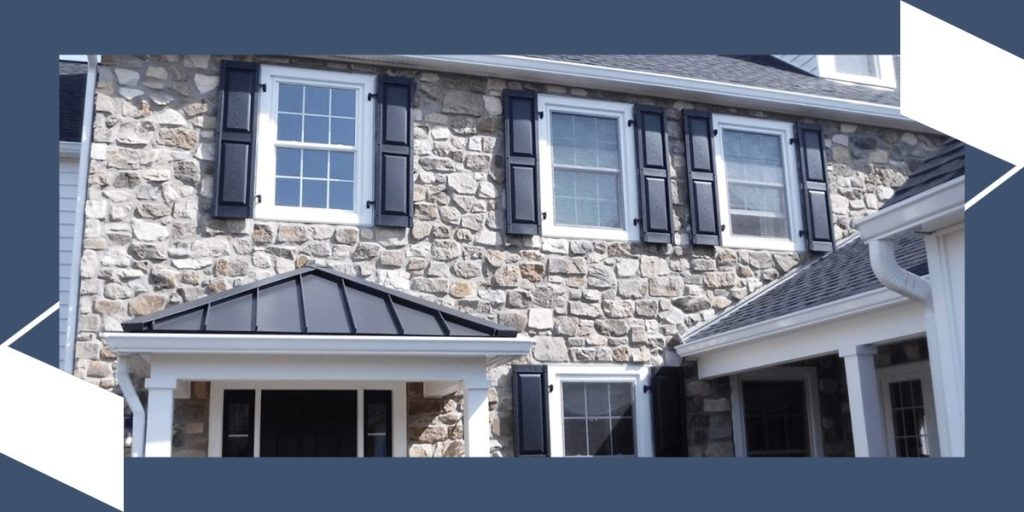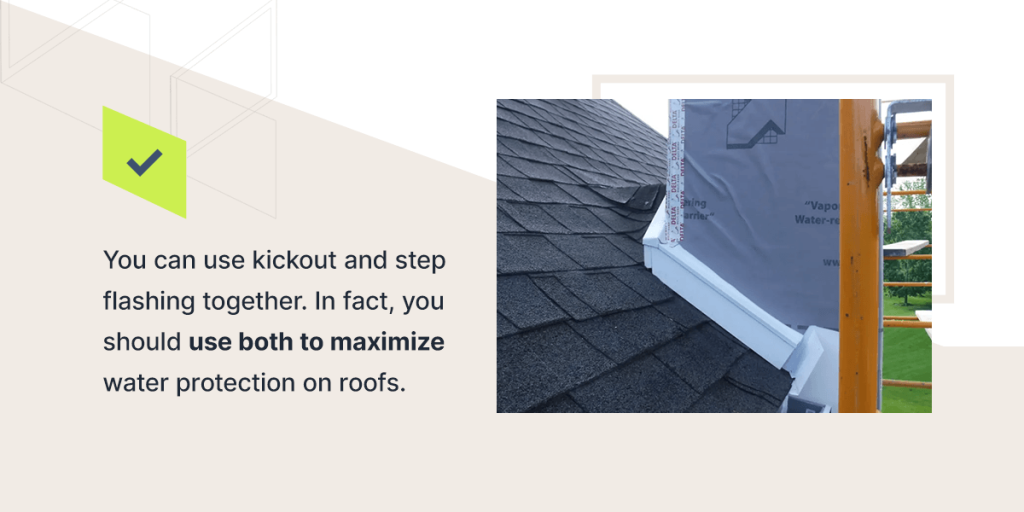

A building’s roof needs proper defense against rainwater to ensure longevity. Flashing is critical for combating damage and leaks.
Understanding the types of roof flashing can help you get the best material for the job, protecting client roofs and staying code-compliant. Kickout and step flashing play unique roles in safeguarding a home and improving the roofing system’s overall performance.
Roof flashing is used along roof seams and joints to prevent water intrusion. Features like chimneys or skylights with vertical designs can make waterproofing challenging. To combat common issues, professionals use waterproof materials like galvanized steel, copper, aluminum or plastic. Roofers install flashing in these difficult areas to redirect the water and keep the roof interior dry.
Some common flashing types include:
Each version offers unique benefits and has a specific purpose for water redirection.
Step flashing looks like little steps along the roof. It’s used on sections where the roof intersects with vertical walls. The step design prevents water from seeping in between the shingles and the wall.
Every step is installed over the previous one, creating an overlapping pattern that effectively redirects water. Roofers install these models against the wall and under each shingle.
The step design comes from bending the material at a 90-degree angle. One side lays on the wall, and the other sits on the roof deck. You can utilize step flashing on the following features:
Kickout flashing, or diverter, is a specialized waterproofing. It is used to divert water away from walls and into the gutter.
Without kickout flashing, water can run down the wall, missing the gutter and creating foundation issues over time. Its unique sloped design makes for easy water redirection, preventing problematic pooling.
You’ll need kickout products in areas with lots of water runoff, like steep-slope valley roofs. Use kickout flashing where the roof ends, and there’s a gutter and vertical wall.
The main difference between step and kickout products is purpose. Step flashing covers the entire intersection between the wall and the roof, while kickout flashing diverts water at specific points on the roof’s end.
You should avoid installing these different types in the wrong area. Doing so will compromise effectiveness and risk possible water intrusion.
The other differences between these products are installation and shape. Since you need to overlap step flashing, it’s installed one piece at a time. Kickout flashing is installed in one piece near the sidewall and gutters.
Step versions have a very distinct 90-degree shape, while kickout models are positioned for better water redirection.
Yes, you can use kickout and step flashing together. In fact, you should use both to maximize water protection on roofs. Step versions will handle water deflection on roof and wall intersections. Kickout flashing is then needed to take water running down the roof and redirect it into the gutters, protecting the foundation. Install kickout units where your step material ends.

The International Building Code (IBC) requires flashing on roofs in vertical intersection areas. Failure to install step flashing puts roofs at risk and creates code violations.
Kickout flashing, on the other hand, is not explicitly required. You should still consider using it on the roof edge. The more water successfully redirected to the gutters, the longer the building will last. Going above and beyond with materials is a great way to maximize water protection.
Both step and kickout flashing provide quality water protection. With the right flashing type, materials and installation, you can deliver superior performance.
Once you choose to use step and kickout flashing, you must tackle materials.
Material is critical for product durability. The right model will fit your bottom line while improving the consumer experience. Compare these material options to get the best one:
Flashing installation is just as important as the material choice. Even the best flashing will fail with improper practices.
Keep these common issues in mind to prevent water from getting through:
Don’t let water infiltration damage your projects. Kickout Flashing by PBZ ensures water gets effectively directed away from roofs, improving project quality. Our kickout flashing solutions are designed to last. We craft our products from durable aluminum 3003 alloys, and our solutions outperform plastic alternatives that break down over time.
Our products guarantee a watertight, permanent solution that blends seamlessly with your roofing and gutter system. Whether you’re working on a new build or repairing existing damage, our team can help. We have various options available, including both powder-coated and uncoated. We keep a wide selection in stock, minimizing delays for your team. Additionally, our quick shipping options ensure you get what you need when you need it.
Enjoy lasting water damage prevention on all your construction and roofing jobs. Contact Kickout Flashing by PBZ to get a flashing solution that boosts customer satisfaction. Find a location near you online today.
